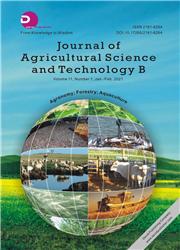Effects of PEG Priming and Fungicide Treatment on Kenaf (Hibiscus cannabinus L.) Seed Germination
引用次数: 1
Abstract
An experiment was conducted in the Jeollabuk-do Agricultural Research and Extension Services, Korea from February to June 2017, to study the effect of polyethylene glycol (PEG) on the germination of kenaf seeds variety ‘Jangdae’, which treated with seven PEG concentrations (0%, 10%, 20%, 25%, 30%, 35% and 40%) for 24 h at 20 °C in the dark, and evaluate the effect of fungicide on surging kenaf seed germination in the field. Results showed that the critical concentration rate needed to hasten germination based on germination percentage, times to reach 50% of the final germination rate (T50) and mean no. of days to germination (MDG) is using 10% PEG. A maximum germination rate of 83.8% using hydro-priming (HP) (seed treated with HP) was observed during the first 12 h of treatment. The control’s (Jangdae seed) germination increased sharply and reached a maximum germination rate of 53.2% on the 21st day in the field. After 21 d, germination of all priming treatments ranged from 13.8% to 26.3%. The palisade layer (PAL) after priming treatment was more damaged than that of the control. Also, a significant difference on the acid level between the control and PEG priming treatment (p < 0.05) was observed. It was also found out that seed modifications after priming could affect in the field. A fungicide called “Tiram” was used after priming to help kenaf seeds decrease T50 and MDG, and increase germination percentage. Results showed that application of fungicide after priming optimizes seed germination and vigor. Therefore, it is recommended to invigorate the kenaf seed before planting.聚乙二醇和杀菌剂处理对红麻(Hibiscus cannabinus L.)的影响种子发芽
本文章由计算机程序翻译,如有差异,请以英文原文为准。
求助全文
约1分钟内获得全文
求助全文

 求助内容:
求助内容: 应助结果提醒方式:
应助结果提醒方式:


